This article was originally published on PostPerspective.com.
Nat Geo’s The Hot Zone: Anthrax, starring Daniel Dae Kim and Tony Goldwyn, is based on the real-life events that followed the harrowing time right after September 11. During that time, letters containing anthrax were sent to victims in Florida; Washington, DC; and New York. Five people were killed, and panic ensued across the country.
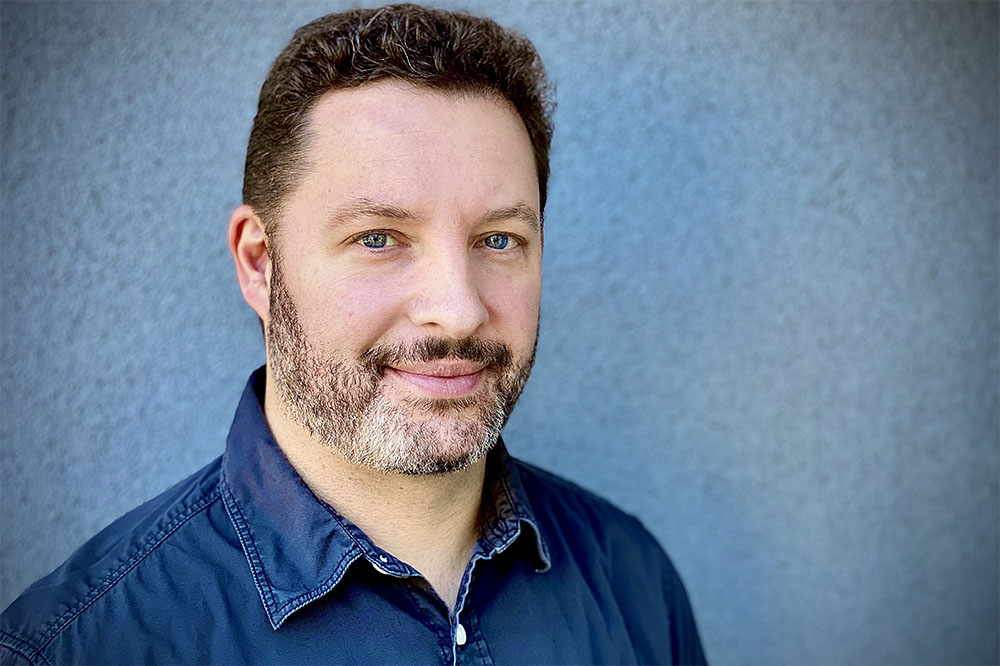
The Hot Zone: Anthrax follows the parallel stories of Kim’s FBI agent Matthew Ryker and Goldwyn’s Dr. Bruce Ivins. Ryker, who specializes in microbiology, risks his career trying to convince his superiors that the country is under attack again. Ivins, a microbiologist, works with the FBI to find who is behind these deadly letters while becoming more paranoid with his discoveries. The series is executive-produced by Ridley Scott, David Zucker and Jordan Sheehan from Scott Free Productions.
Eric Litman, who is currently editing Star Trek: Picard, has vast experience in television, including Marvel’s Agents of S.H.I.E.L.D, 2021’s Charmed and the reboot of Magnum P.I. He cut the pilot and Episode 5 of The Hot Zone: Anthrax, a six-episode limited series (Mark Manos, Joaquin Elizondo and Sang Han were also editors on the series.). We recently spoke to him about his work on this show and setting the pace for the series with the director.
How did you get involved with The Hot Zone: Anthrax?
The pilot episode was directed by Daniel Percival and was written and executive-produced by Kelly Souders and Brian Peterson. I started meeting with Kelly, Brian and Daniel in early 2021. They gave me the first two scripts to read, and I was immediately hooked. I remember post-9/11 very well. I was living on the East Coast at the time, and people were very scared. The pilot definitely captured the fear that everyone was feeling, and I immediately could start seeing the scenes in my head or hearing the types of scores that I planned to temp with.
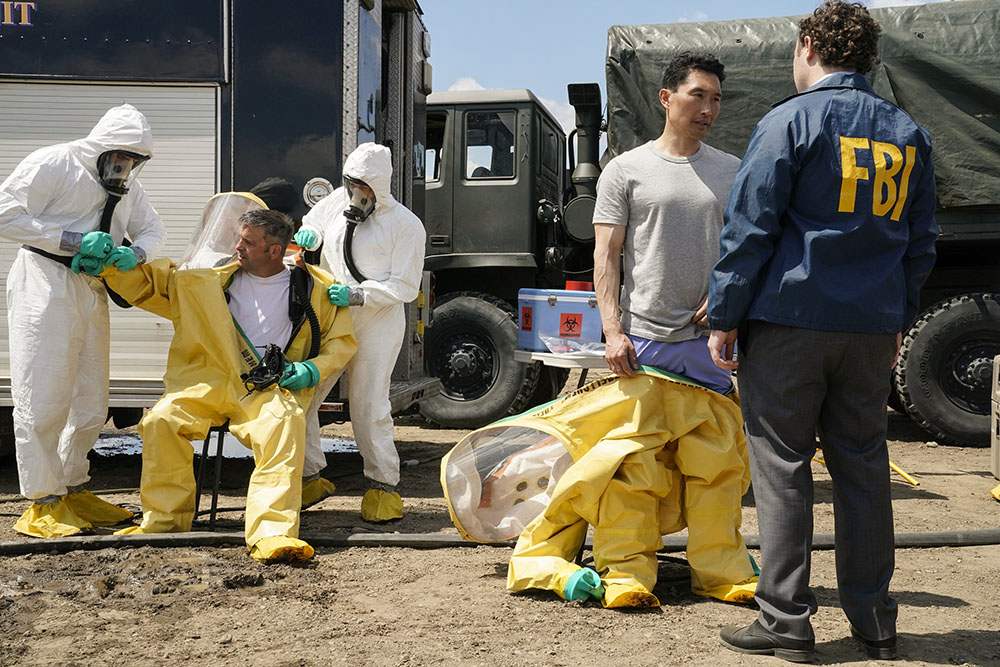
Since I was the first editor on, I was involved in a number of preproduction meetings to discuss the tone of the series. We were still very much in the thick of the pandemic, so all our meetings were through Zoom. Daniel Percival had numerous examples to show the various departments styles of color, tone and edits from other highly regarded shows or features.
Since Daniel came from an editing background, he was immediately able to communicate with me in a quick shorthand, so I knew exactly what he was looking for. Based on our early discussions in prep, I was able to determine the pace and cutting style of the show. I also started pulling scores for the sound of the show, which would help elevate the cuts.
Can you walk us through the needs of the project?
The Hot Zone: Anthrax is based on real-life events, and it was very important that we conveyed this. But there was some creative license taken — Agent Ryker was not based on one specific person but rather on a combination of people, so the spirit of that time needed to be captured with him. Bruce Ivins was a real person, so it was important to be respectful but accurate in his portrayal.
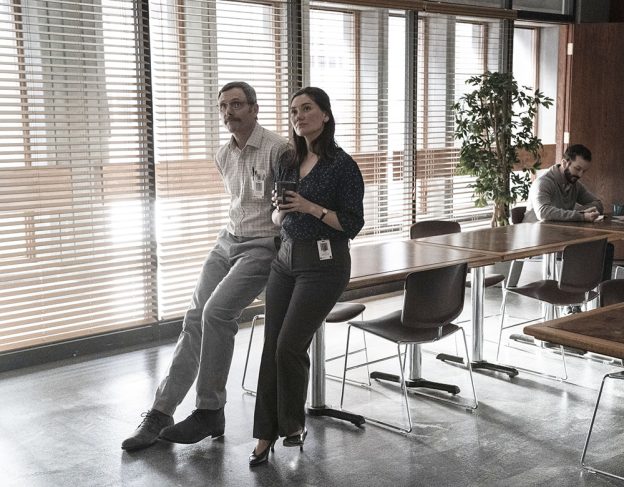
There was also an added element of combining news footage from that time into our show. We were given real news broadcasts, White House press feeds or the raw news feed that we could use to make into our own news broadcast, as long as we were being factual. These news reports were used to move the story forward and, with pace, show a country gripped in fear.
We had a great team of people to make sure we were using the footage correctly and factually.
There were also a few occasions when news broadcasts were shot for specific scenes. Because our story takes place in 2001, when HD was not the standard, all this footage needed to be treated and formatted properly for the TVs of that time period.
How often was the EP looking at cuts?
While Daniel was in production, I would send weekly cuts of that week’s work to him. I would present it as if it were the editor’s cut, even though scenes were missing. This would allow the director and I to discuss the still-evolving scenes, suggest additional footage to shoot and, ultimately, shape and polish the edit even further. This time of collaboration was very helpful as the process moved forward.
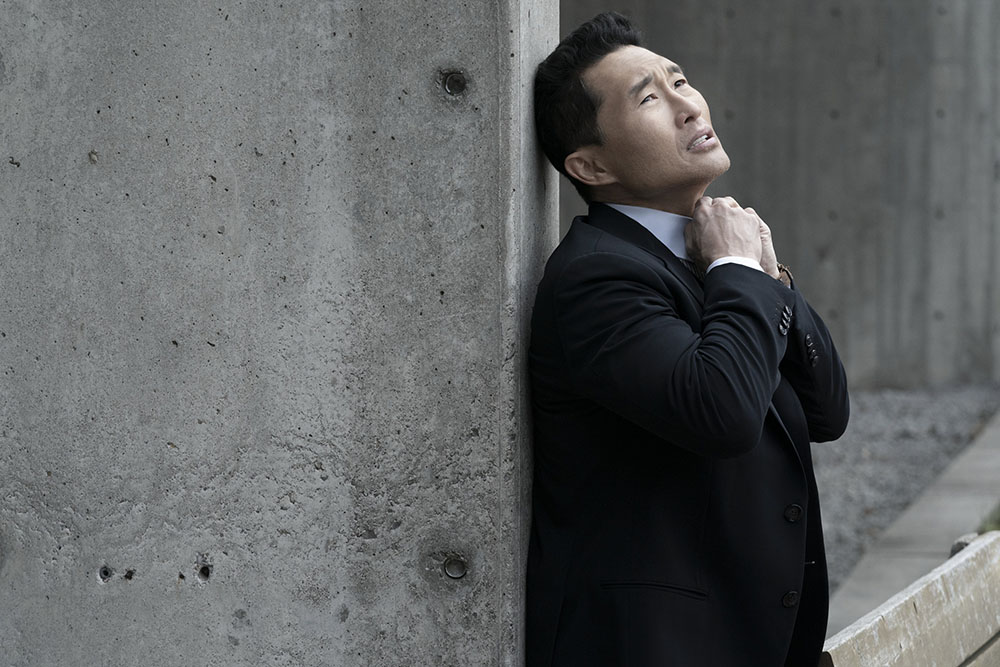
What did you edit on? And I’m assuming it was remote? Can you discuss that workflow?
The series was cut on Avid Media Composer. The people at Remote Picture Labs (RPL) put together my work-from-home setup. I didn’t have a CPU on-site, but rather dedicated Teradici hardware using zero client hardware. RPL has a specific data center-based location, which gave us unlimited internet bandwidth. Our setup was fully virtual using RPL’s own cloud-based system. This setup allowed RPL to monitor our systems, respond to critical issues immediately and, a lot of times, address an issue before I was even aware there was one. The system was very stable, and I never felt that I had any downtime due to technical issues.
Our “cutting room” was also virtual. We use Slack as our internal messaging application, so we could communicate with various people as if we were all in the same cutting room. When working with producers or directors, we used Evercast to stream the cut, which worked great and was very stable. Evercast also allowed very easy access to directors and producers. I could show cuts or dailies very quickly, especially when people were on set and wanted to see something they might have a question about.
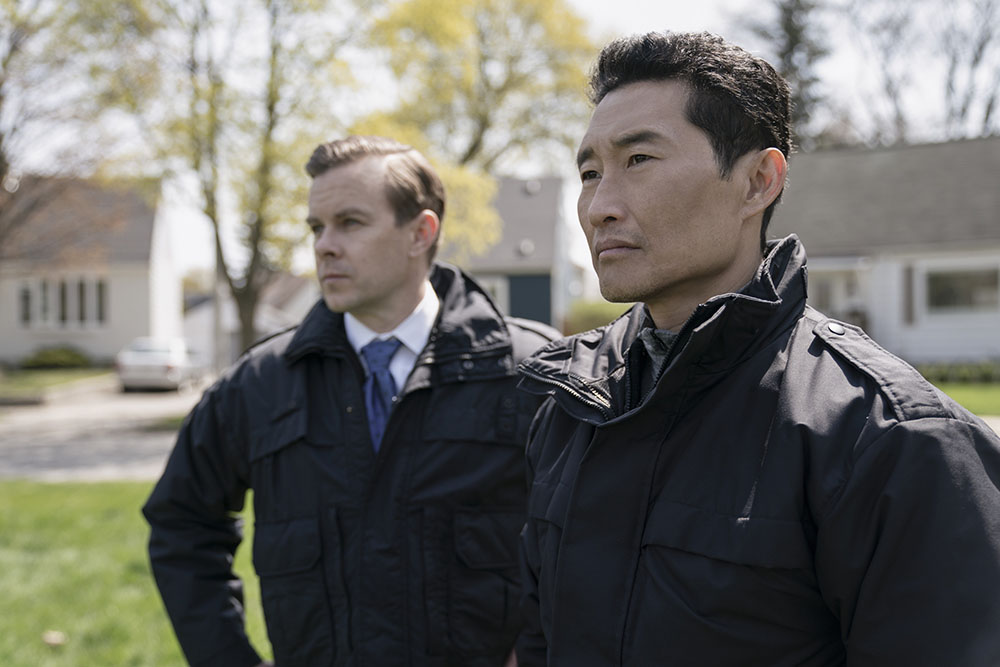
How do you prepare for cutting a series?
When cutting any series, especially premieres, finales or, in this case, the pilot, I find it very important to listen to what the intent of the show is. What is the tone of the show? What are our characters’ motivations, and what will be their arcs? I always make myself available to attend the tone meeting prior to shooting, and I take copious notes for the specific moments or beats. I also make myself very available to the director while they are shooting. I give them real-time feedback on the dailies, and I am very receptive to whatever notes they give me as well.
I go into every episode I cut with a plan, knowing full well that I might need to pivot once I see the footage. It would be wrong of me to impose my preconceived ideas onto the cut. I let the footage speak to me and tell me what editorial choices I need to make. Sometimes my best work comes from happy accidents, and it’s very important to allow yourself to experiment. That being said, it’s also very important to cut what was scripted. Producers and directors need to see what they intended. Once we’re all on the same page, I might suggest other options for scenes. I always cut lots of different versions of a scene, and I am prepared to audition alternative versions.
What were some of the interesting challenges you faced on the project?
Cutting a show during a pandemic is never easy. Because I was never in the same room with anyone, it had its challenges. But I found that you have to be very clear with your co-workers and be receptive to their communication. And I am now on my third work-from-home job cutting on Star Trek: Picard.
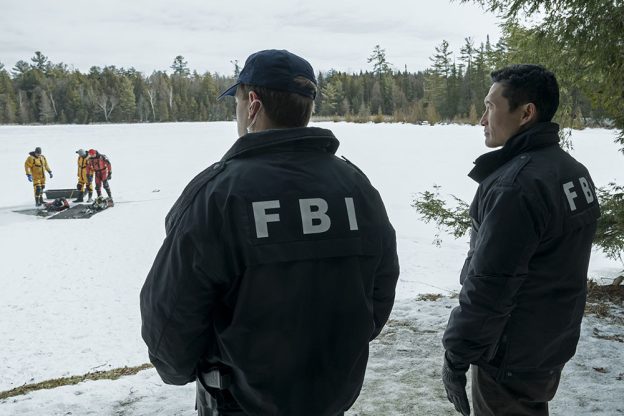
Did you have a favorite scene? If so, what was it and why was it your favorite?
There are two scenes in The Hot Zone: Anthrax that I am very proud of and can’t wait for people to see. The pilot opens in 1979 Communist-controlled Russia, and a chemical weapons plant accidentally exposes a whole town to aerosolized anthrax.
I spent a lot of time cutting the anthrax escaping the weapons plant, traveling toward the town, about to surround and ultimately kill innocent people. Daniel Percival shot everything at 48fps, and it’s very beautiful footage of children and their parents playing on a playground. Everyone is happy and enjoying their time outside, when suddenly they think it’s starting to snow. However, they are really being surrounded by deadly anthrax spores. When cutting this scene, I chose the most beautiful shots to contrast the horrific reality. The temp music that I used to score this scene was very simple, with long sustains to convey the anthrax traveling toward the people, building to a big crescendo and taking us to the hospital where the townspeople eventually end up. At the hospital, the Russian military tries to cover up what has happened, hiding the dead, destroying the paperwork and intimidating the attending doctors with their cover story.
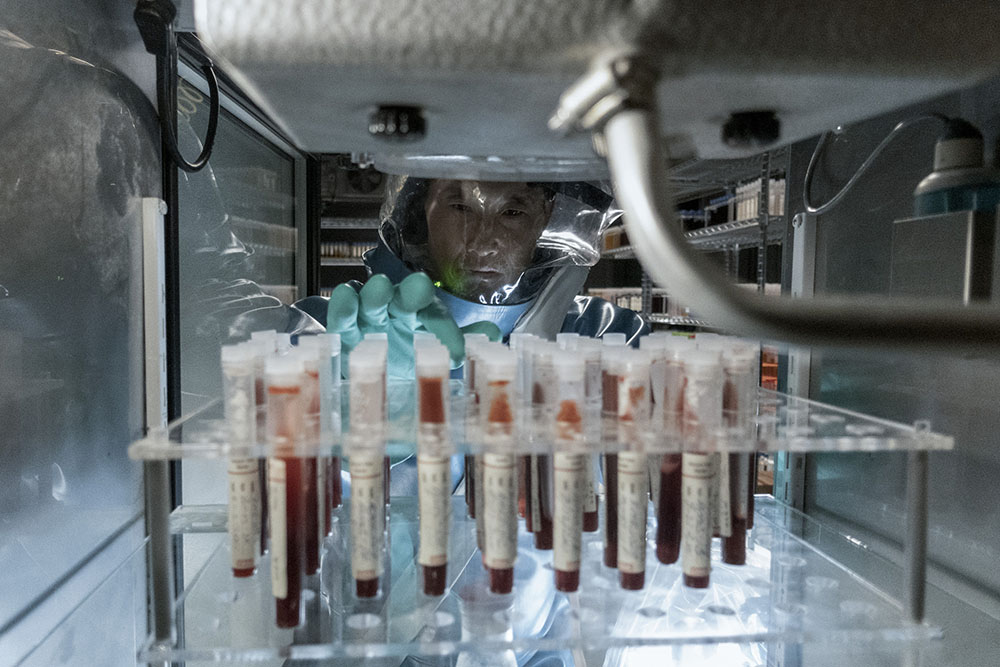
A doctor there quickly sees what is happening and decides to do a quick autopsy of one of the dead, removing his heart to save as proof that this person died from weaponized anthrax. This is all happening while the military is there, destroying all the evidence. This scene is very tense, with a certain amount of pace. Daniel shot everything with a very clear direction. Every shot was designed to tell a specific beat. However, the footage that Daniel provided gave me a lot of latitude to shift POV within the scene.
Daniel would give me feedback almost immediately based on my weekly cuts. Initially he would give me very general broad strokes, more as an inspiration. He encouraged me to play and experiment with shifting the POV from the various people in the scene. What would the scene look like if we came in with the military taking over the hospital, and we find our hero doctor in the commotion? What would the scene look like if we start with our hero doctor and discover the military taking over the hospital?
Taking the time to try these versions and working with Daniel allowed us to get the very best out of the material. Since we had an early weekly collaboration, he and I were able to see very early which areas might need pickups for additional beats that would really add to the tension. It was a great experience, and because he and I worked very hard on this scene almost immediately, it didn’t change past directors’ cuts.
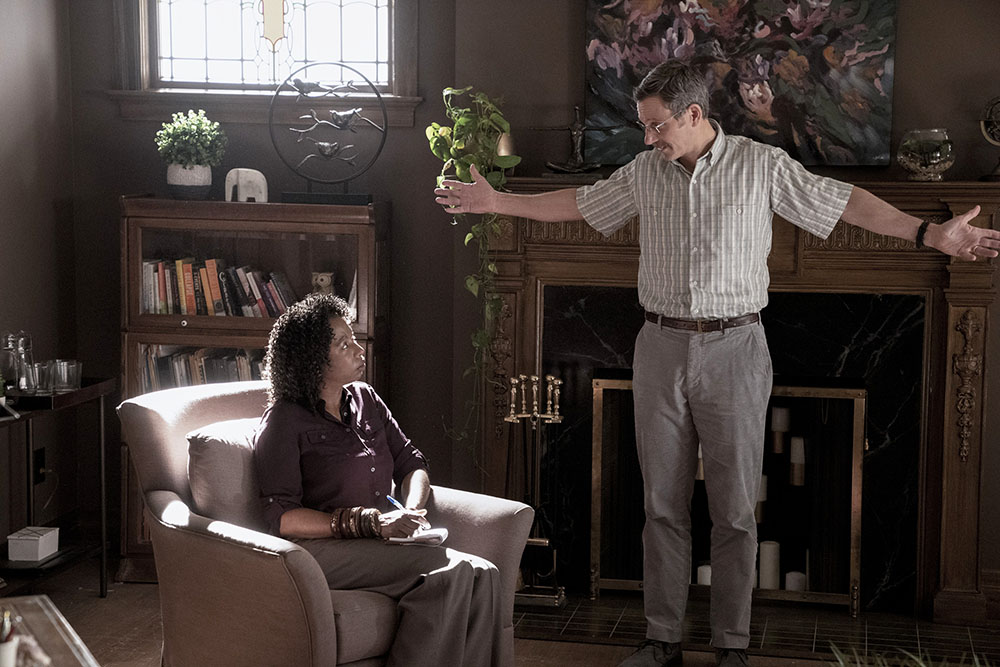
I also cut the fifth episode of the six-episode limited series, directed by Courtney Hunt. This episode includes a nine-page interrogation scene. The interrogation takes numerous turns, as each character tries to outwit the other in their mental chess match. Courtney shot a lot of footage for this scene, and rightfully so. Because both actors were so prepared and gave terrific performances, there were really no wrong takes to use. My challenge was to create an arc in both of their performances, make the audience feel that one is outdoing the other before the rug gets pulled out from under them. I did this through the performances that I chose for the edit, when to make a cut and, most importantly, when not to cut and just let the actor deliver an amazing performance.
I was given terrific coverage, traditional two-shots, mediums, mediums with slow pushes that became close-ups, close-ups and Dutch angles. I didn’t want to go to the close-ups or Dutch angles right away. I wanted to build to this type of coverage, and when I chose to use the close-ups or Dutch angles, I had to make sure I was saying something with that cut. If I cut the whole scene in that coverage, the audience wouldn’t feel the emotional impact of that moment, and the scene would fall flat. Ultimately, shot selection paired with terrific performances gave us a great build in this pivotal scene.
From PostPerspective.com.